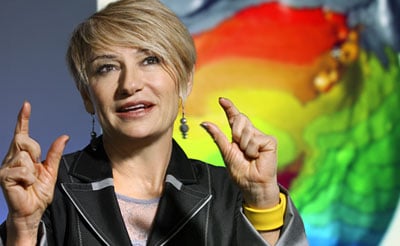Biomedical engineers from Johns Hopkins and Stony Brook universities are collaborating to develop new cardiac treatment methodologies by testing optogenetic approaches for serious heart problems such as arrhythmia. Initial results published in Nature Communications article entitled “A comprehensive multiscale framework for simulating optogenetics in the heart“ indicate that with optogentics, cells can be targeted with gentle light beams and used to reshape the behavior of the heart.
The team, led by JHU Department of Biomedical engineering Murray B. Sachs Professor Natalia Trayanova, and lead author and postdoctoral fellow, Patrick Boyle, has created an intricate computer-simulated model of the heart for use in conducting virtual cardiac optogenetics experiments. Initial tests using light-based stimulation of the cardiac tissue have yielded exciting results — which gives optimism that use of this treatment method could arrive within the next decade.
The elaborate virtual heart model was designed to replicate cardiac function, identify the key properties of light sensitivity, and measure the impact of actuation by light on tissue, as well as demonstrate optogenetics delivery methods.
“The most promising thing about having a digital framework that is so accurate and reliable is that we can anticipate which experiments are really worth doing to move this technology along more quickly,” remarked Patrick Boyle, lead author of the Nature Communications paper. “One of the great things about using light is that it can be directed at very specific areas. It also involves very little energy. In many cases, it’s less harmful and more efficient than electricity.”
Learn more: Johns Hopkins University Press Release

